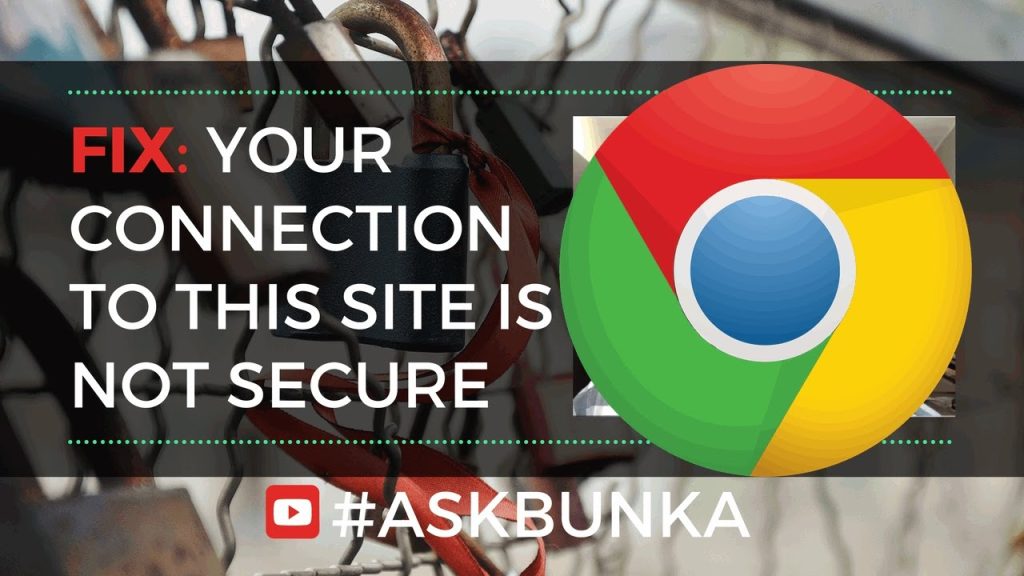If you’re wondering how to fix a “not secure” website, it’s actually quite simple. The first thing you need to do is purchase an SSL certificate. Once you have that, you can then install it on your server and activate it.
After that, all of your website’s traffic will be encrypted and secured.
- Open your web browser and type in the address of the website that you’re trying to access
- Look for a padlock icon next to the URL in the address bar
- If you see this icon, it means that the website is using SSL and is secure
- If you don’t see a padlock icon, or if you see a warning message saying that the site is not secure, it means that the website is not using SSL and is not secure
- To fix this problem, you’ll need to contact the website owner and ask them to enable SSL on their site
Not Secure To HTTPS Secure WordPress Website!
I Clicked on a Not Secure Website
If you’re like most people, you probably don’t think twice about clicking on a website that says it’s “not secure.” But what does that actually mean? And is it really something you should be worried about?
When you click on a not secure website, your computer is essentially connecting to the site without any encryption. That means that anything you do on the site – including entering personal information or financial data – could be intercepted by someone else. It’s also worth noting that not all not secure websites are created equal.
Some may simply be outdated and haven’t been updated to use the latest security protocols. Others may be deliberately created by hackers in an attempt to steal your information.
So, should you avoid not secure websites altogether?
It depends. If you’re just browsing the internet, then there’s probably no need to worry too much. But if you’re entering personal or financial information on a website, it’s best to make sure that the site is secure before proceeding.
You can usually tell if a site is secure by looking for https:// at the beginning of the URL (as opposed to http://). You can also check for a green padlock icon in your browser’s address bar, which indicates that the connection is encrypted and therefore more difficult for someone to intercept.
Of course, even if a website is secure, there’s no guarantee that your information will never be compromised.
Hackers are always finding new ways to break into even the most well-protected systems. So it’s important to be vigilant about keeping your own personal information safe online – regardless of whether or not the websites you visit are secured.
How to Open Not Secure Website in Chrome
If you’re trying to open a not secure website in Chrome, there are a few things you can do. First, try opening the site in another browser. If that doesn’t work, you can try disable security features in Chrome or set your browser to ignore SSL errors.
Opening a Not Secure Website in Another Browser
If you’re having trouble opening a not secure website in Chrome, try opening it in another browser like Firefox or Safari. If the site opens in the other browser, there may be a problem with Chrome’s security settings.
Disabling Security Features in Chrome
You can try disabling some of Chrome’s security features by going to chrome://flags/#allow-insecure-localhost and setting the “Allow invalid certificates for resources loaded from localhost” flag to “Enabled”. This will allow you to access not secure sites on your own computer without getting warnings from Chrome.
However, this is not recommended as it makes your computer less secure.
How to Fix Not Secure Website on Mac Chrome
If you’re using Chrome on your Mac, you may have noticed a “Not Secure” warning in the address bar when visiting some websites. This can happen for a number of reasons, but most often it’s because the website is not using HTTPS (Secure Hypertext Transfer Protocol).
HTTPS is a secure protocol that encrypts communication between your browser and the website you’re visiting.
This helps to protect your privacy and keep your information safe from eavesdroppers. Many sites now use HTTPS by default, but some still don’t.
If you see a “Not Secure” warning when visiting a website, there are a few things you can do:
– Check if the site offers an HTTPS version. If so, try accessing that instead.
– Contact the site owner and let them know about the issue.
They may be unaware of the problem and be able to fix it quickly.
– Use a different browser or add-on that can force HTTPS for all websites (such as HTTPS Everywhere).
– Use a VPN (Virtual Private Network) to encrypt all of your internet traffic, including communications with insecure websites.
Can You Get a Virus from a Not Secure Website
Websites that are not secure can pose a serious threat to your computer. When you visit a not secure website, your computer is at risk of being infected with a virus or malware. A virus can corrupt your files, damage your system, and even steal personal information.
Malware can also track your online activity and send spam emails from your account. To protect yourself from these threats, it’s important to only visit websites that are secure. You can tell if a website is secure if it has “https://” at the beginning of the URL.
If you see this, it means the website is using a Secure Sockets Layer (SSL) which encrypts data sent between your computer and the website. This makes it much harder for hackers to access your information. So, next time you’re about to click on a link, make sure you check to see if the site is secure first!

Credit: www.bluehost.com
How Do I Fix Https Not Secure in Chrome?
If you’re using Chrome and you see the “Not secure” message, it means that your website is not using a secure connection. This usually happens when you’re trying to access a site that’s not using HTTPS, which is a protocol that encrypts communication between your browser and the website you’re visiting.
To fix this, you’ll need to switch to a different browser or contact the website owner and ask them to switch to HTTPS.
In the meantime, you can try accessing the site through an incognito window in Chrome, which will bypass any security warnings.
How Do I Make My Website Secure Again?
If your website was recently hacked or taken down by a virus, there are a few steps you can take to make it more secure. First, check your web hosting account to see if it offers any security features like malware scanning or firewalls. If not, consider switching to a host that does offer these services.
You should also install a security plugin on your WordPress site, like Wordfence Security. This will help to scan for and block malicious traffic. Finally, make sure that you keep all of your WordPress plugins and themes up to date, as outdated software can be vulnerable to attack.
Conclusion
If you have a website that is not secure, there are a few things you can do to fix it. First, check to see if your site is using SSL. If it is, then you need to get a new SSL certificate.
You can either buy one from a trusted provider or generate one for free using Let’s Encrypt.
Once you have your new certificate, you need to install it on your web server. After that, you need to update your site’s code so that all pages are served over HTTPS.
Once you do that, your site will be secure and visitors will see a green padlock in their browser when they visit it.


